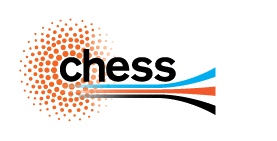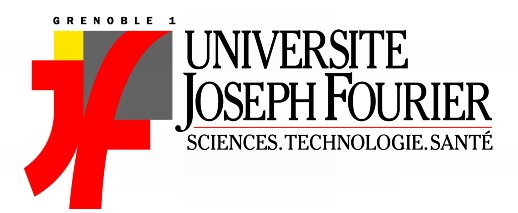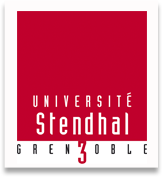Program
The presentations are scheduled to be from Monday to Wednesday (2-4 February). Participants are expected to arrive on Sunday, February 1st, 2015.
Monday, 2 February
2015 |
|
|---|---|
| 09:00 - 09:45 | Welcome drink |
| 09:45 - 10:00 | Christian JUTTEN and Pierre COMON |
| 10:00 - 12:00 | Lek-Heng LIM |
| Lunch break | |
| 14:00 - 16:00 | Giorgio OTTAVIANI |
| 16:15 - 18:15 | Rasmus BRO |
Tuesday, 3 February
2015 |
|
|---|---|
| 09:00 - 10:00 | Cedric RICHARD |
| 10:15 - 12:15 | Remi GRIBONVAL |
| Lunch break | |
| Free afternoon | |
| 17:00 - 19:00 | David BRIE |
Wednesday, 4 February
2015 |
|
|---|---|
| 09:00 - 10:00 | Nicolas DOBIGEON |
| 10:15 - 12:15 | Guillaume BOUCHARD |
| Lunch break | |
| 14:00 - 14:30 | Ciro CATTUTO |
| 14:30 - 15:00 | Ignat DOMANOV |
Titles and slides
Christian Jutten and Pierre Comon: Introduction Slides
In alphabetic order:
- Guillaume Bouchard: Binary matrix and tensor factorization - application to the probabilistic modeling of relational databases Slides
- David Brie: I.Uniqueness of NMF. Slides II.Tensors in antenna array processing Slides
- Rasmus Bro: Tensor analysis in chemistry Slides
- Ciro Cattuto: Presentation of ISI Foundation Slides
- Nicolas Dobigeon: Bayesian fusion of multiple images Slides
- Ignat Domanov: Uniqueness issues Slides
- Remi Gribonval: Learning low-dimensional models with penalized matrix factorization Slides
- Lek-Heng Lim: The Role of Tensors in Numerical Mathematics Slides
- Giorgio Ottaviani: On uniqueness of tensor decomposition Slides
- Cedric Richard: Geometrical approaches in NMF, Applications to hyperspectral data unmixing Slides
Abstracts
| Guillaume Bouchard | Binary matrix and tensor factorization - application to the probabilistic modeling of relational databases |
Many applications involve multiple
interlinked data sources, but existing approach to handle
them are often based on latent factor models (i.e.
distributed representations) which are difficult to learn.
At the same time, recent advances in convex analysis, mainly
based on the nuclear norm (relaxation of the matrix rank)
and sparse structured approximations, have shown great
theoretical and practical performances to handle very large
matrix factorization problems with non-Gaussian noise (in
particular binary matrices) and missing data. In this
tutorial, we will show how multiple matrices or tensors can
be jointly factorized using a convex formulation of the
problem, with a particular focus on:
Another contribution to KB modeling relates to binary
tensor and matrix factorization with many zeros. We show a
new learning approaches for binary data that scales
linearly with the number of positive examples. It is based
on a iterative split of the tensor (or matrix) on which
the binary loss is approximated by a Gaussian loss which
itself can be efficiently minimized. Experiments on
popular tasks such as data imputation, multi-label
prediction, link prediction in graphs and item
recommendation illustrate the benefit of the proposed
approaches. |
|
| David Brie | 1. Uniqueness of NMF. 2. Tensors in antenna array processing |
| Part 1: Uniqueness and
admissible solutions of NMF Non-negative Matrix Factorisation (NMF) has a wide range of applications including chemometrics, data mining, hyperspectral imaging, speech processing, musical signal processing… However, in general, such a factorization is not unique. Thus, to better understand it, we will review some conditions under which the NMF is unique and if not, how to characterize the set of admissible solutions. A special focus will be given to the geometrical interpretation of the NMF uniqueness conditions. Also, using this geometrical interpretation, we will see how some additional constraints (minimal volume enclosing simplex, sparseness) may ensure the identifiability of the NMF. Part 2: CP based array processing Array processing is a fondamental problem in signal processing for which Esprit based approach exploits the notion of rotational invariance. Starting from the Esprit method, we will present the key ideas of the Candecomp/Parafac (CP) based array processing approach which provides us with a very elegant way to handle multiple invariances. We will show how this approach can be extended to array having multiple scales of invariance and to vector sensor array processing. |
|
| Rasmus Bro | Tensor analysis in chemistry and biology |
| We will discuss commonly used
multi-way methods and show how they can be useful in solving
real world problems in chemistry, medicine and biology.
Focus will be on understanding the PARAFAC model (also known
as CANDECOMP) and also variants such as PARAFAC2 and the
Tucker3 model will be mentioned as will as multi-way
regression methods. It will be shown how to validate and use
tensor analysis in real world examples. Throughout the presentations, MATLAB will be used for illustrating practical aspects of the analysis as well as common problems. If you bring your own data, it will be possible to do analysis on those. |
|
| Nicolas Dobigeon | Bayesian fusion of multi-band images |
|
In this talk, we address the problem of fusing remotely
sensed multi-band images. The observed images are related to the high
spectral and high spatial resolution image to be recovered through
physical degradations, e.g., spatial and spectral blurring and/or
subsampling defined by the sensor characteristics. The fusion problem
will be formulated within a Bayesian estimation framework. The fusion
problem will be solved within a Bayesian estimation framework. Three
different prior models will be introduced, as well as the the associated
algorithms required to approximate the Bayesian estimators of the scene
of interest. In particular, one of the proposed model allows the
spectral blurring operator to be estimated jointly with the high
spectral and high spatial resolution image.
|
|
| Remi Gribonval | Learning low-dimensional models with penalized matrix factorization |
| Sparse modeling has become a very
popular tool in signal processing and machine learning,
where many tasks can be expressed as underdetermined linear
inverse problems. Together with a growing family of related
low-dimensional signal models, sparse models expressed with
signal dictionaries have given rise to algorithms combining
provably good performance with bounded complexity. Through data-driven principles to choose the model, dictionary learning leverages these algorithms to address applications ranging from denoising to inpainting and super-resolution. This tutorial is meant to draw a panorama of dictionary learning and related (sparse, non-negative …) matrix factorization approaches for low-dimensional modeling. The talk will cover principles, connections with blind signal separation, algorithms, as well as an overview of recent theoretical results guaranteeing the robust identifiability of overcomplete dictionaries in the presence of noise and outliers. |
|
| Lek-Heng Lim | The Role of Tensors in Numerical Mathematics |
|
A tensor of order d or d-tensor is a multilinear map. It
extends linear operators and bilinear forms, which are 2-tensors. We
discuss how studies of higher-order tensors (i.e., d > 2) can shed
light on questions in numerical linear algebra and optimization.
We start from a classical result: The arithmetic complexity of matrix multiplication is determined by the rank of a 3-tensor. This insight of Strassen, when further developed, permits us to answer more "modern" questions: (i) Can one extend the popular techniques of L^1-norm sparse vector recovery and nuclear norm low-rank matrix completion to tensors of order 3 or higher? (ii) Can one multiply two 3-tensors in a way that generalizes the usual matrix-matrix multiplication? The answer to both questions is no. Our next question comes from nonlinear optimization. Can one extend the 1st (KKT) and 2nd order conditions for optimality of constrained optimization problems to higher orders? We will derive 3rd and 4th order conditions, involving 3- and 4-tensors, for constrained optimality and show that 5th and higher order conditions do not in general exist. One might notice the parallel to results on algebraic expressions for polynomial roots but they are unrelated. We end with a curious nugget from convex optimization. Nesterov and Nemirovskii famously showed that conic programming problems with self-concordant barriers may be solved in polynomial time. Casting self-concordance as a statement about 6-tensors, we deduce that deciding self-concordance is itself an NP-hard problem. |
|
| Giorgio Ottaviani | On uniqueness of tensor decomposition |
|
Uniqueness of CP tensor decomposition (PARAFAC or CANDECOMP)
is a crucial property, needed in many applications, which allows to
recover the individual summands
from a tensor. A tensor which has a unique minimal tensor decomposition
is called identifiable.
The well known Kruskal Criterion gives since 1977 a sufficient condition
which guarantees identifiability of a specific tensor.
A related question is generic k-identifiability, which asks if the
general tensor of rank k is identifiable.
Kruskal criterion answers affirmatively to this question when the rank
is relatively small. Precisely, for n*n*n tensors, Kruskal criterion
guarantees generic k-identifiability for k<=3n/2-1. This result has a
large amount of applications, but it is still unsatisfactory because it
covers a range of ranks up to a linear bound of n, while more general
n*n*n tensors have a rank which grows quadratically with n. The picture
is similar for a*b*c formats and for more than three modes.
There has been a large recent activity on this topic by means of tools from algebraic geometry. Chiantini and Ciliberto discovered in 2001 that a classical paper by Terracini from 1911 contained a clever idea which allows to treat identifiability by infinitesimal computations. This is counter-intuitive, because two different decompositions of the same tensor can be very different one from each other. Terracini method ("weak defectivity") allows to detect if a second decomposition may exists, just by infinitesimal computations "on a neighborhood of the first one". This idea may be implemented in an algorithm which detects generic identifiability just by linear algebra, that is by computing the rank of certain (large) Jacobian and Hessian-like matrices. Running this algorithm, in several collaborations with Bocci, Chiantini and Vannieuwenhoven, it has been discovered that generic k-identifiability still holds for all subgeneric ranks k, unless a list of exceptions (the weakly defective cases). These results have a rigorous theoretic confirmation in the symmetric case, while in the general case there is still a gap between the state of the art of theoretical proofs and the numerical experiments. A corollary of these results is the computation of the dimension of secant varieties for tensors. In particular this gives a different approach to the Alexander-Hirschowitz Theorem. This approach was touched in particular cases already by Strassen in 1981. The algorithm gives also a sufficient condition to check identifiability of specific tensors. There is an additional problem for this task, which is related to our ignorance about equations of secant varieties. Nevertheless, in many cases, this algorithm can detect identifiability of specific tensors beyond Kruskal bound, but still in a range linear with n. In the last part of the talk I will report about recent results about identifiability of general tensors, and their canonical forms, by means of homotopical method techniques, in collaboration with Hauenstein, Oeding and Sommese. |
|
| Cedric Richard | Geometrical approaches in NMF, applications to hyperspectral data unmixing |
|
The emergence of hyperspectral imaging sensors in recent
years has brought new opportunities and challenges in image analysis.
Hyperspectral images are cubes of data, measuring spectral composition
within a spatial view. In hyperspectral imaging, spectral unmixing is
one of the most challenging and fundamental problems. It consists of
breaking down the spectrum of a mixed pixel into a set of pure spectra,
called endmembers, and their contributions, called abundances, by
solving a non-negative matrix factorization problem. Many endmember
extraction techniques have been proposed in literature. In this
presentation, we propose to review those based on a geometrical
formulation.
|









